Nonlinear Filtering and Smoothing An Introduction to Martingales, Stochastic Integrals and Estimation Venkatarama Krishnan Professor Emeritus of Electrical Engineering University of Massachusetts LowellDOVER PUBLICATIONS, INC.
Mineola, New YorkCopyright Copyright 1984 by Venkatarama Krishnan
All rights reserved. Bibliographical Note This Dover edition, first published in 2005, is an augmented republication of the work originally published by John Wiley & Sons, New York, in 1984. The author has written a new Preface to the Dover Edition and has provided an Errata list (on ). Library of Congress Cataloging-in-Publication Data Krishnan, Venkatarama. Nonlinear filtering and smoothing : an introduction to martingales, stochastic integrals, and estimation / Venkatarama Krishnan. cm. cm.
This Dover edition, first published in 2005, is an augmented republication of the work originally published by John Wiley & Sons, New York, in 1984. The author has written a new preface to the Dover edition and has provided an Errata list. Includes bibliographical references and index. eISBN 13: 9780486781839 1. Martingales (Mathematics) 2. 3. 3.
Estimation theory. I. Title. QA274.5.K74 2005
519.236dc22 2005045424 Manufactured in the United States of America
Dover Publications, Inc., 31 East 2nd Street, Mineola, NY 11501 TO MY FAMILYKamalaGayathriHemalekhaAmma PREFACE TO THE I DOVER EDITION A martingale is a stochastic process where the best estimate of the future value conditioned on the past including the present, is the present value. In other words, the expected value of the process at time (t + 1) conditioned on past and present values up to t is the value at t. It is a process without trend and hence unpredictable.
PREFACE TO THE I DOVER EDITION A martingale is a stochastic process where the best estimate of the future value conditioned on the past including the present, is the present value. In other words, the expected value of the process at time (t + 1) conditioned on past and present values up to t is the value at t. It is a process without trend and hence unpredictable.
However, not every process is a martingale, and a well-behaved real-valued stochastic process called semi-martingale can be uniquely decomposed as a sum of a martingale and a predictable process. In this book, mathematical fundamentals for the development and analysis of discrete and continuous time stochastic models are discussed that include Brownian motion, stochastic calculus including Ito and Stratonovic integrals, and martingale representation theorem. With the advance of technology, tools developed in one field find use in other fields. Black and Scholes had developed an option-pricing model in 1973 that has been expanded by many financial scholars. Assumptions of no dividends and no taxes or transaction costs, and removing the restriction of constant interest rates are some of the developments. These investigations have resulted in more accurate models for valuation of stock options.
The study of martingales and semi-martingales that was once in the realm of engineering and mathematics has permeated into the field of finance that can now be aptly called financial engineering. In stochastic finance, Brownian motion-driven stochastic processes are used to describe security price dynamics with no predictable components, and martingales characterize arbitrage free market. The predictable component in the decomposition of a stochastic process presents a convenient method to include arbitrage. Martingale bridges are used in pricing of bonds. Even though this book was written by an engineer for engineers, I had several inquiries during the past years from students majoring in finance about obtaining a copy of this book originally published by John Wiley and Sons (1984). Students, being on limited budgets, find it difficult to buy expensive books that are not directly connected with their course work.
For several decades, Dover Publications have brought out affordable reference and textbooks. I have used Dover books for more than five decades, and they have been a valuable source of information. I am very happy that they decided to include Nonlinear Filtering and Smoothing in their collection, making it affordable to many more students as an extracurricular reference. I am very thankful to the reprint editor, John Grafton, for taking the initiative in bringing out this edition. Minor corrections are appended as errata at the end of the book. I will greatly appreciate it if errors are brought to my attention.
I am very grateful to my family for extending their unstinting support in times of travail during the past year. V ENKATARAMA K RISHNAN Chelmsford, MassachusettsJanuary 2005PREFACE This book is the outcome of a course on martingales and estimation theory being given since the fall of 1977 by the author at the Indian Institute of Science, Bangalore, to engineering graduate students with a basic knowledge of probability theory. The continued rapid advances in the martingale approach to filtering and smoothing problems made it necessary to give the engineering students a clear physical understanding of the fundamental concepts in this area. As a consequence, applicational aspects have been stressed throughout the book. Starting with the basic concepts of probability and stochastic processes in contains some of the results of the work on smoothing problems carried out by the author and his students during the early seventies. This book is written by an engineer for engineers.
As far as possible, the physical understanding of the problem has been stressed, and as a result rigorous mathematical proofs have in some cases given way to heuristic proofs. Rigorous proofs have also been given and in some of those cases they lead to a better physical understanding of the problem. In some other cases proofs have been referred to other textbooks. This book has been class tested for the past several years, and the generous feedback from colleagues and graduate students from two continents has helped the author to present it in this particular form. During the preparation of this book the two-volume work by Lipster and Shiryaev () on point processes has also appeared on the market. This book also carries some aspects of point processes, but again at a lower level of presentation.
It has been the intent of the author to give a concise physical understanding of the principles of martingales, stochastic integrals, and estimation theory from an applicational point of view at a level where an engineering student with a basic probability theory background can comprehend. For more intensive studies, including mathematical rigor, the student can refer to the books mentioned above. Selected problems have also been included at the end of every chapter to enhance the utility of the book. The references given at the end are by no means exhaustive, but only reflect the relevance they bear to the material in the book. In writing this book the author has been greatly influenced by the now classic works of Wong, Kailath, Kallianpur, Segall, and Lipster and Shiryaev. He has freely drawn on their works and would like to express his scientific debt of gratitude to these authors.
This book could not have been written but for the direct and indirect support obtained from many sources in India and in the U.S.A. The author is thankful to the students who took the course and suggested many improvements. In particular, he would like to mention J. Viswanathan, C. E. R. R.
Ramakrishnan, and H. S. Jamadagni for technical discussions on the material of the book. S. L. Yadav of the Tata Institute of Fundamental Research, Bangalore, gave him suggestions for improving the clarity of presentation of earlier chapters.
He is thankful to Professor Joseph L. Hibey of the University of Notre Dame and Dr. Wolf Jachimowicz of WBC Extrusion Products, Lowell, for the long hours spent in formulating the fault detection problem and the painstaking discussions on the clarity of its presentation. He is indebted to Professor Harold J. Kushner and Professor Thomas Kailath for their critical review and excellent suggestions for improving the quality of presentation. He appreciates the support given to him by Herb Sandberg and Allen Dushman by extending him facilities at the Dynamics Research Corporation, Wilmington, Massachusetts, for finishing parts of the book.
Next page
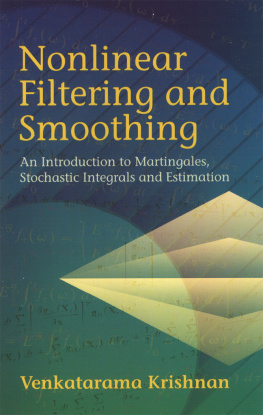

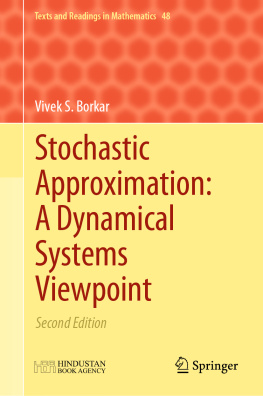
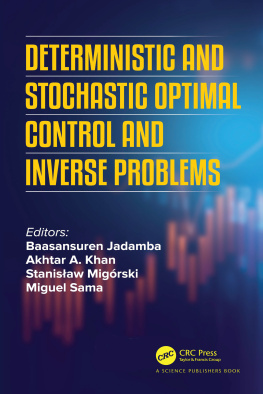

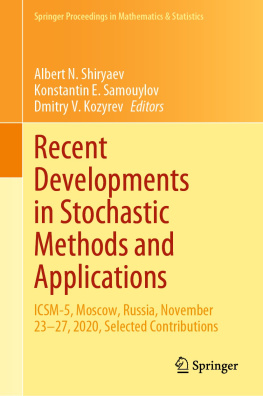
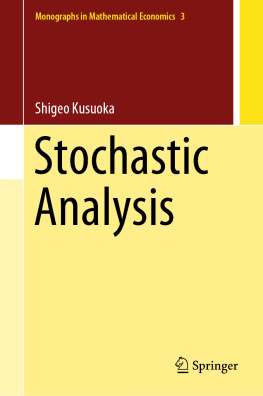
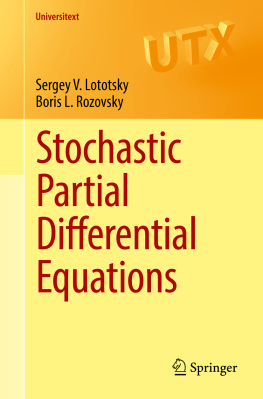
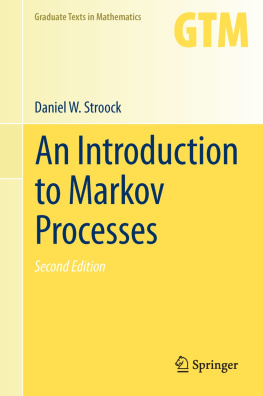

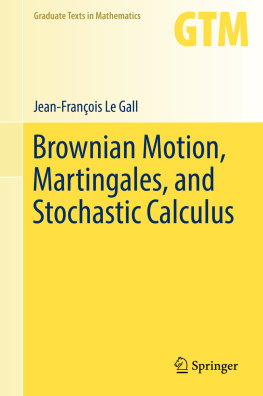


 PREFACE TO THE I DOVER EDITION A martingale is a stochastic process where the best estimate of the future value conditioned on the past including the present, is the present value. In other words, the expected value of the process at time (t + 1) conditioned on past and present values up to t is the value at t. It is a process without trend and hence unpredictable.
PREFACE TO THE I DOVER EDITION A martingale is a stochastic process where the best estimate of the future value conditioned on the past including the present, is the present value. In other words, the expected value of the process at time (t + 1) conditioned on past and present values up to t is the value at t. It is a process without trend and hence unpredictable.